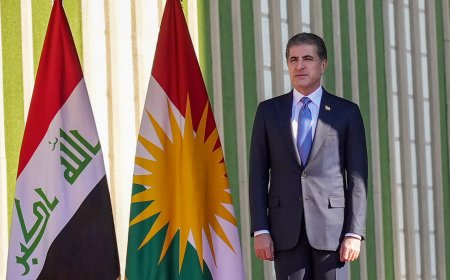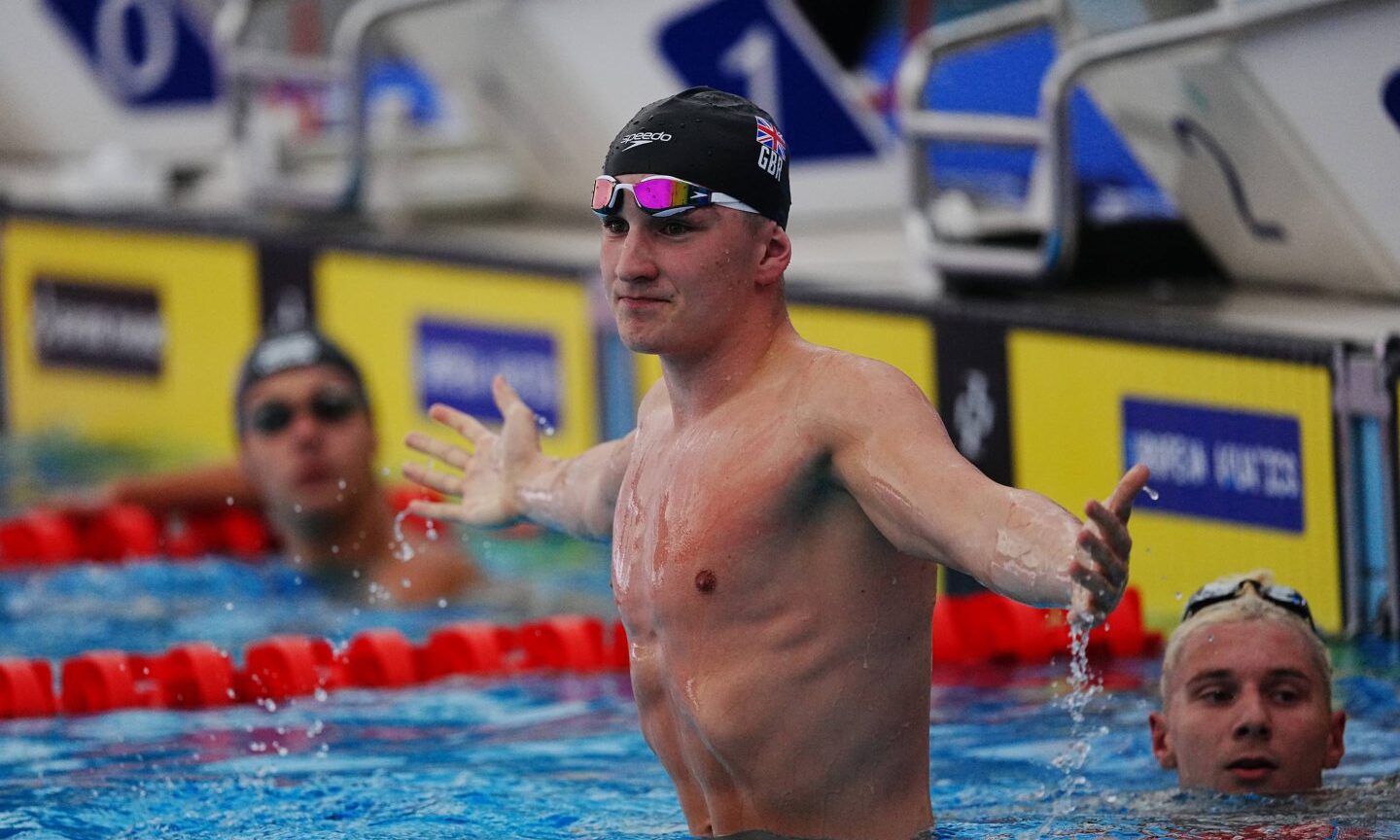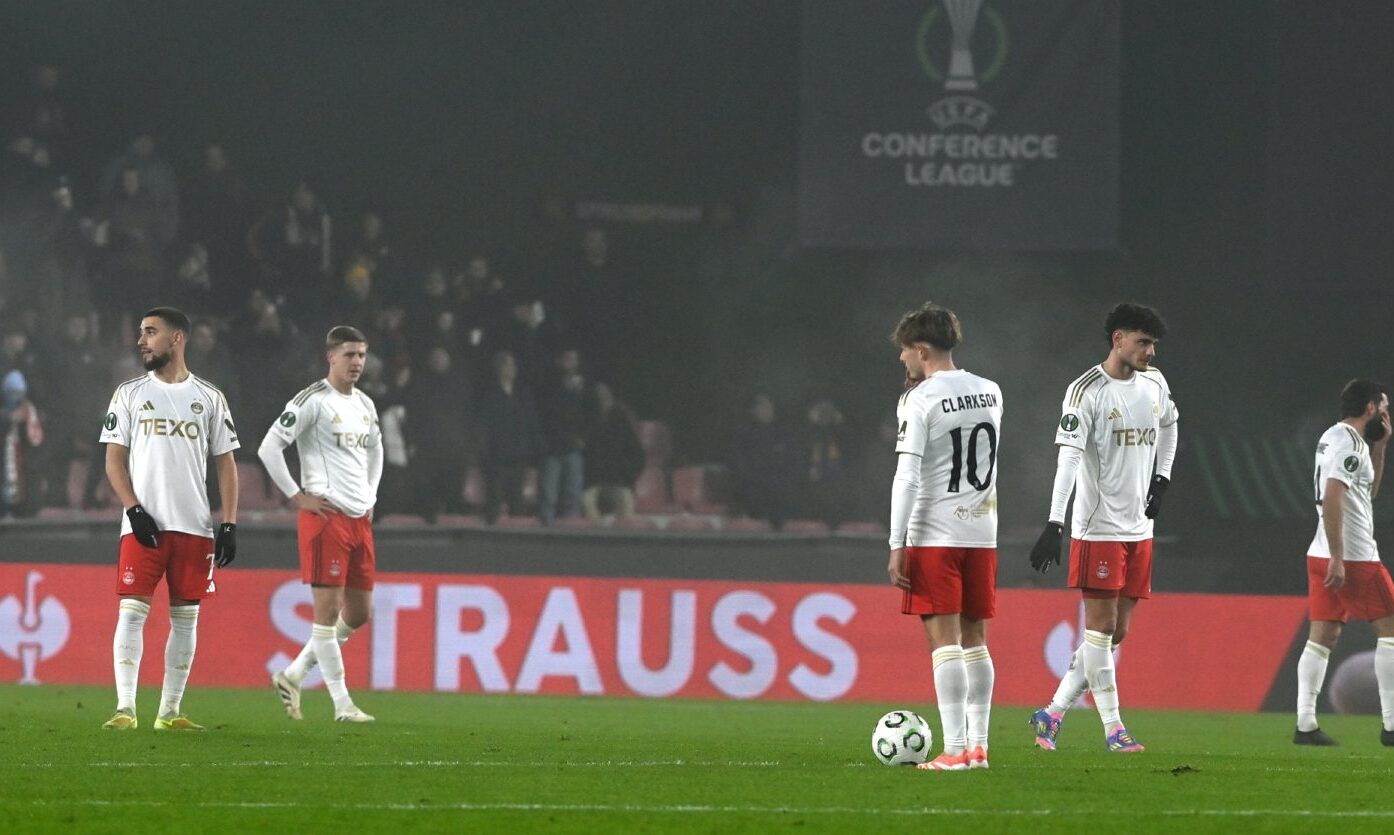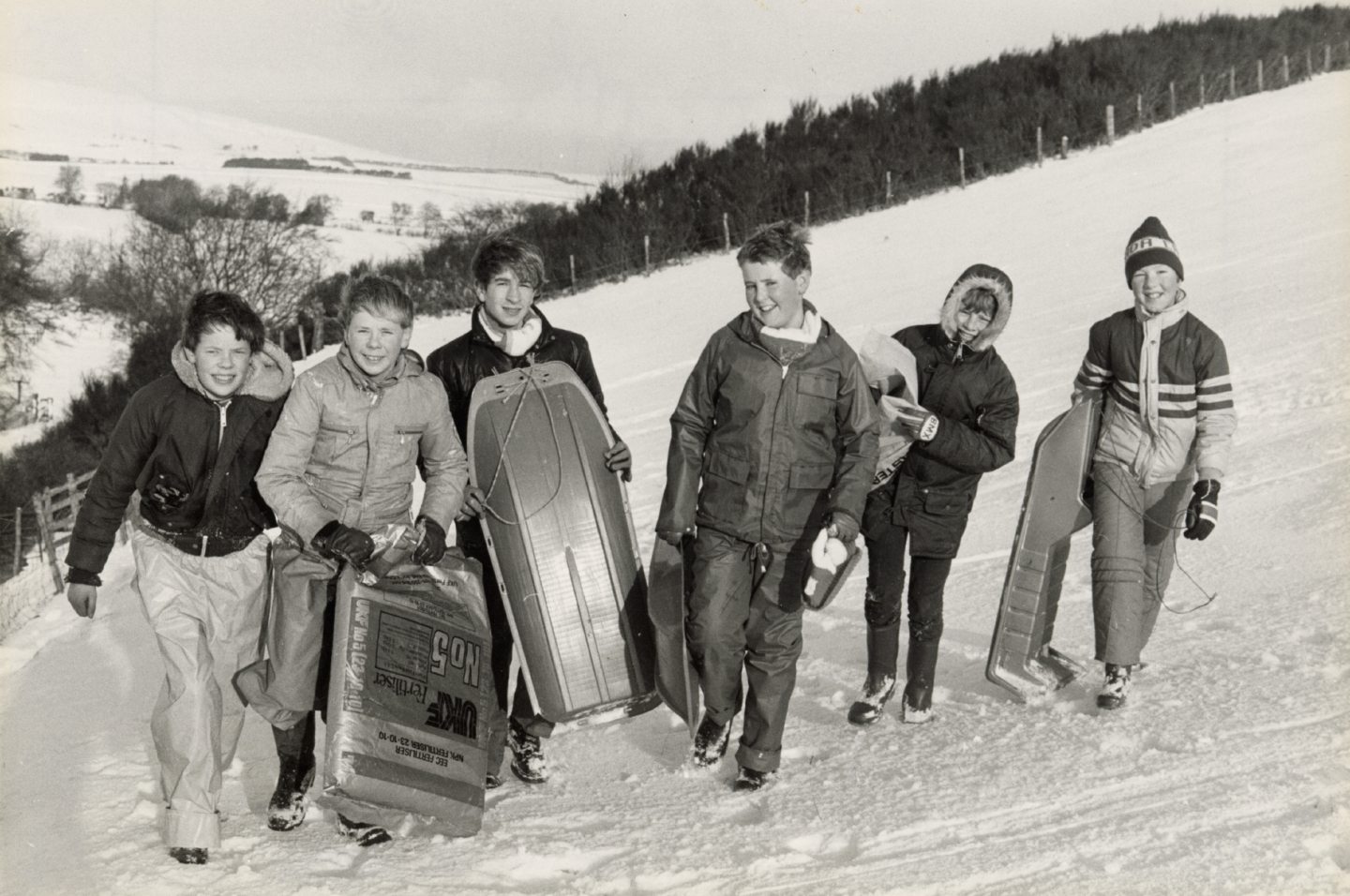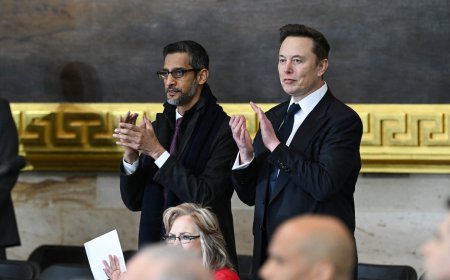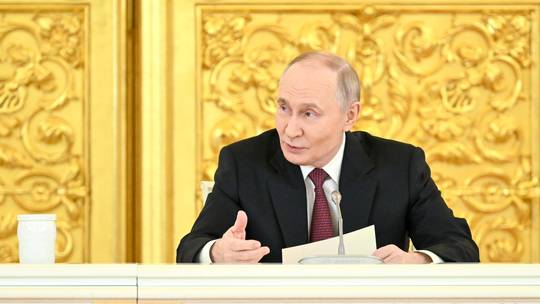Germany is arming itself to the teeth to transform Europe again
As Berlin prepares for Putin, its growing military might has profound implications for NATO

As soldiers from the Panzergrenadierbataillon 371 brigade joined allies for exercises in Norway, they were supposed to showcase the capabilities of an elite, rapid-response Nato force.
Instead, their drills resembled a farce as the ill-equipped German troops were forced to use black-painted broomsticks instead of machine guns on their troop carriers.
The embarrassing incident just over a decade ago came as the German military, otherwise known as the Bundeswehr, grappled with equipment shortages that also forced the use of ordinary Mercedes vans instead of armoured vehicles in another key exercise.
And while Berlin sought to play down the use of broomsticks, to allies it seemed emblematic of Germany’s neglect of military spending.
“They were seen as a bit of a joke,” says Francis Tusa, an independent defence analyst.
But times change. And in the face of Russian aggression, the German war machine is now rising once again – and showing it is a force to be reckoned with.
Under radical reforms pushed through by Friedrich Merz, the Chancellor, Berlin has this year thrown off all fiscal constraints on defence expenditure to build Europe’s most powerful army.
The overhaul has paved the way for massive equipment purchases of tanks, artillery, fighter planes and warships costing hundreds of billions of pounds, as the Bundeswehr prepares to face up to the threat posed by Vladimir Putin.
Overall, Germany spent more than €50bn (£44bn) on arms last year and it has drawn up plans to spend another €377bn on top of this.
The historic expansion is set to transform Germany into a load-bearing support of Nato once again, with huge implications for continental security.
“They are aiming for the largest and most powerful army in Europe, so in many ways they are going back to their traditional Cold War role,” says Edward Arnold, of the Royal United Services Institute (Rusi), a military think tank.
But a key unknown remains: Will it all be enough to face down Russia?
Financial neglect
In the event of a Russian attack on Nato’s eastern flank, Germany’s role would be a central one.
Alongside troops permanently stationed in Lithuania, the main forces of the Bundeswehr would be expected to rush forward to support allies such as Poland in holding off Moscow’s forces and taking back lost territory.
“They are really expected to provide the bulk of land capabilities on continental Europe,” says Arnold.
“It’s from Germany and Poland that a lot of the firepower and the heft is going to come through, as well as from the US.”
Nicholas Drummond, a British defence consultant who works with German military companies, adds: “It’s likely the Russians would attack Poland, and Poland would need help, and Germany would provide that.
“So they need the ability to conduct manoeuvre warfare, and that means tanks, infantry, artillery and aircraft working in concert to push an enemy out.”
Yet for years Germany was happy to miss its Nato spending targets and let its armed forces atrophy, as leaders assumed the days of armed conflicts in Europe were behind them.
The West German army had been one of the best-equipped in Europe. But in the decade after the fall of the Berlin Wall, military spending tumbled from 2.5pc to just 1.4pc as reunification with East Germany took place and the Bundeswehr was scaled back.
This was partly the result of a deeply ingrained anti-militarist movement that had been a force in West Germany in the 1950s, itself an aversion to the horrific legacy of the Nazis and their actions in the Second World War.
It meant German politicians were comfortable pocketing a “peace dividend” and avoiding conflicts for the most part, except for participation in Nato deployments in Kosovo and Afghanistan.
But the resulting spending squeeze – which continued even after the Russian invasion of Crimea – left the Bundeswehr in such poor shape that it was forced to cannibalise equipment when things broke, says Guntram Wolff, a professor of economics at Germany’s influential Kiel Institute think tank.
“Spending came down so much that the replacement of existing equipment became almost impossible,” he says. “If you had three tanks, you would use two just to get spare parts for the one left over.”
For example, between 1992 and 2013, the army’s stock of main battle tanks plunged from 6,684 to just 323, according to Kiel’s analysis of data from the International Institute of Strategic Studies.
Likewise, the number of German infantry fighting vehicles dropped from 3,250 to 395, with the number of howitzers and artillery guns falling from 3,214 to 130 and the Luftwaffe’s fleet of combat aircraft shrinking from 553 to 205.
It was this financial neglect that led to 2014’s high-profile embarrassments in Nato exercises.
But the lack of kit also prompted more serious concerns, as it affected supposedly elite units tasked with rushing to the front lines in the event of a war with Russia. It didn’t look like much of a deterrent.
Instead, Angela Merkel, the former German chancellor, as well as her predecessor Gerhard Schröder, preferred a policy of “wandel durch handel” (change through trade). This was based on the idea that enmeshing the German and Russian economies would ensure Putin had too much to lose from any potential standoff.
But that policy has since been consigned to the dustbin following two political earthquakes that galvanised support for rearmament: Russia’s 2022 attack on the rest of Ukraine and Donald Trump’s warning that America will no longer bankroll Europe’s defence.
“There’s been a double whammy, of Russia on one side threatening Europe and America pulling away on the other,” says consultant Drummond.
“Europe does need to step up. And that’s the real driver behind what’s going on here.”
Trump’s ‘indifference’
Putin’s unprovoked attack on Ukraine shattered the illusion in Berlin that he was a man who could ultimately be reasoned with.
Public anxiety was also heightened by just how close the conflict was to home. The distance between Germany’s eastern border and Ukraine is barely 400 miles, roughly the same distance between Westminster and Edinburgh.
Olaf Scholz, Merkel’s successor and leader of the historically Russia-sympathising Social Democratic Party, captured the sense of shock in what would later become known as his “zeitenwende” (turning point) speech to the Bundestag in 2022.
“We are living through a watershed era,” he told German MPs. “And that means that the world afterwards will no longer be the same as the world before.”
He warned Putin not to “not underestimate our resolve to defend every square metre of Nato territory together with our allies”, and committed Germany to building “a powerful, cutting-edge, progressive Bundeswehr that can be relied upon to protect us”.
“What is needed to secure peace in Europe will be done,” Scholz added.
Within two years of the speech, Germany had set up a special €100bn fund for military procurement, became the second-biggest donor to Ukraine and was meeting Nato’s then-target of spending 2pc of GDP on defence for the first time.
But with Berlin still being criticised for foot-dragging and wavering over specific arms exports to Ukraine, it was a fresh shockwave from America that provided the impetus to go further and faster: the return of Donald Trump.
The US president had made no secret of his disdain for “delinquent” countries that had failed to meet their Nato commitments in the past – and even suggested he might not come to their aid. But as he prepared to resume office, Trump also made clear he would now demand Nato allies to spend as much as 5pc of GDP on defence.
“Europe is in for a tiny fraction of the money that we’re in [for],” he said in early January.
“We have a thing called the ocean in between us, right? Why are we in for billions and billions of dollars more money than Europe?”
This, coupled with Trump’s televised outburst at Volodymyr Zelensky, the Ukrainian president, in the Oval Office, forced top figures in Berlin to contemplate the unthinkable: what if Washington couldn’t be relied upon any more?
It was another watershed moment for Merz, the then-incoming chancellor whose Christian Democratic Union party had come out on top in February’s elections.
An avowed Atlantacist, he was so shaken by Trump’s comments that he warned Europe needed “independence from the USA” and started pushing for radical reforms of Germany’s constitutional “debt brake” to allow astronomically higher levels of military spending.
“I never thought I would have to say something like this,” he said. “But it is clear that the Americans are largely indifferent to the fate of Europe.”
The debt brake change was passed by the Bundestag in March, two months before Merz assumed office as Chancellor, essentially scrapping all limits on borrowing for defence.
It has created a massive scope for spending, with the new Chancellor pledging to use it to transform the Bundeswehr into “the strongest conventional army in Europe”.
This month, it emerged he has drawn up plans to spend a whopping €377bn on defence, largely in addition to Scholz’s €100bn.
Most of this will be funded by borrowing. And thanks to years of fiscal prudence, international lenders are happy to oblige.
Germany currently boasts a debt-to-GDP ratio of just 62pc, compared to the rates of around 100pc that the UK and France are grappling with, giving it far more scope to borrow.
Bond traders also appear to be relaxed about further lending to Berlin. According to data on benchmark 10-year bonds, investors demand an interest rate of just 2.6pc from Germany versus 3.4pc from France and 4.4pc from Britain.
All this means the Germans can afford to re-arm while actually cutting taxes for businesses and working pensioners at the same time, says Sander Tordoir, chief economist at the Centre for European Reform think tank.
“Germany has the most fiscal space out of any large economy in Europe, simply because its debt ratio is so low,” he says.
“That creates a dynamic where these higher levels of defence spending are just much more viable here. And it’s just not a problem to do that with public borrowing.”
The change to the debt brake should also be seen as a deterrent in and of itself, Tordoir argues, because it technically allows limitless borrowing for the military. Merz has vowed to give the Bundeswehr “all the financial resources it needs”.
For some, the rapid military build-up will evoke the fearsome war machine once built by the Nazis. But today’s rearmament is far removed from the 1930s, as support for higher military spending – now at more than 60pc according to polls – has been hard-won from a sceptical public, says consultant Drummond, who has worked with German defence companies for more than 20 years.
“Of course, when you talk about this, some people ask whether we should be worried about Germany having an army like it had in 1939,” he says. “But things are now very, very different. It’s not at all a militaristic culture.
“The Germany that emerged from reunification was very much a pacifist country. They are not naturally supportive of rearmament – they see it as a necessary act.”
Under Merz’s budget plans, spending will grow to Nato’s new target of 3.5pc of GDP by 2029. This is six years earlier than Britain’s equivalent pledge.
In cash terms, this has already seen the total defence budget jump from about €53bn in 2021 to €86bn this year. That figure will then rise to €108.2bn in 2026 and €162 billion by 2029.
“The Lord loves the sinner who repents,” quips Tusa, the defence analyst. “And the levels of spending we are seeing now are, shall we say, rather serious.”
Fighting fit
The Leopard 2 is the Bundeswehr’s main battle tank. It’s also the world’s favourite.
Designed in the 1970s by Bavaria’s Krauss-Maffei (now known as KNDS), the fearsome fighting machine is used by more than 20 countries and has become the most iconic German defence export.
But despite shipping thousands overseas to willing buyers, the Germans bought no new Leopards themselves after the Cold War until 2023 – and even those were only to replace 18 that had been sent to Ukraine.
Now things are changing. Last year, Berlin placed an order for 105 more in a deal that will take the total fleet to more than 400. By comparison, the UK has 213 main battle tanks.
The new units will be used by domestic forces as well as the armoured German brigade that is now permanently based in Lithuania as part of Nato’s “enhanced forward presence”.
And the new Leopards are only a small fraction of the mountain of equipment the Germans are buying in their race to face down the Russian war machine.
In 2024 alone, Berlin ordered 123 Boxer armoured transport vehicles, 265 protected trucks, 19 “Skyranger” mobile air defence turrets, six frigates and two submarines, among many other things, in a €58bn spending spree, according to data compiled by the Kiel Institute.
An order of up to 1,000 American-made Patriot missiles was also announced.
Overall, Germany’s purchases last year added up to more than three times the combined amount spent by Britain, France and Poland in the same period.
If the trend continues, Berlin is on course to spend hundreds of billions of euros.
Much of it is focused on being able to repel Moscow’s ground forces, which will themselves include tanks, armoured vehicles and artillery, as well as the threat of waves of Shahed drones overhead.
In this vein, Germany has this year suggested it will look to acquire 600 more Skyranger platforms, along with 20 more Typhoon fighter jets, 15 American-made F-35 stealth warplanes and 687 more Puma infantry fighting vehicles, adding further billions to the military’s expenditure.
Skyranger in particular – a boxer platform with a 30mm cannon – is seen as a counter to the threat of cheap drones. It can fire 1,000 rounds a minute and uses burst ammunition that spreads out in mid-air to cover larger areas.
“It’s very fast and you’re obliterating a very large area,” says Drummond.
Spending plans leaked to the news website Politico also suggest Berlin will acquire 14 ground-to-air missile launchers from Germany’s Diehl Defence, along with around 700 missiles.
The Bundeswehr also plans to acquire various flying combat and reconnaissance drones, and has placed an €8.5bn joint order with partner countries to replenish 155mm shell stocks that have been depleted from donations to Ukraine.
The bulk of rearmament will be delivered by domestic companies, delivering a much-needed shot in the arm to German industry and sending shares in Rheinmetall, the country’s biggest defence company, rocketing.
They were changing hands for just €96 apiece on the eve of the Ukraine war, but now sell for more than €1,700 today.
American kit, for the most part, is being sidelined. And where it is being bought, it is being partly or completely manufactured in Germany.
“They have ordered a few things to keep Trump happy,” says defence analyst Tusa. “But largely, they are not buying anything American. It is all very much German-designed and German-built.”
For example, even the order of up to 1,000 Patriot missiles, usually manufactured by US company Raytheon, will be made by a joint venture set up with European missile maker MBDA. And Rheinmetall has been awarded work by F-35 maker Lockheed Martin to build fuselages at a facility in North Rhine-Westphalia.
“Even with the F-35, they fought very hard with the Pentagon to get significant chunks of the work,” Tusa adds.
The rearmament push has also come at a fortuitous time for industry, as the automotive market stalls.
Over the past decade, German carmakers have seen their exports fall by nearly a quarter to 3.4 million a year amid stagnant European demand and intensifying competition from domestic brands in China.
The downturn has caused problems for the likes of Volkswagen, which has scaled back its workforce and contemplated closing factories. Now, some of the country’s car plants are being eyed for defence production.
Tordoir believes that the revitalisation of defence, which shares “dual use” components with commercial technologies such as electric vehicles and wind turbines, provides an opportunity to funnel money into the development of sovereign European supply chains in areas such as rare earths, independent of China.
“If you know you are buying all this equipment from European companies, many of which are still reliant on China for batteries and rare minerals, then the logical move is to use some of this defence money to help make those supply chains China-free,” he adds.
Another sign of how seriously rearmament is being taken in Berlin is the recent call for the return of conscription, or national service, which was previously scrapped in 2011.
Today, the Bundeswehr has around 185,000 troops, but Germany has pledged to grow this to around 260,000 soldiers, on top of a target for 200,000 reservists.
Merz is said to be doubtful that a voluntary scheme alone will deliver enough recruits, with the issue having prompted an internal dispute within his ruling coalition.
A recent poll found the proposal commands support from more than half the public. “There’s a growing acceptance, not just among elites but also the general public, of the need for increasing numbers, and that it’s going to have to be through some form of conscription model,” says Rusi’s Arnold.
He contrasts the more sober debate in Germany with the “sensationalist headlines” in Britain, where the suggestion of a “citizens army” from former Army head General Sir Patrick Sanders was interpreted as a call for conscription and provoked a backlash for being “alarmist”.
Arnold puts these differences partly down to the German government’s acknowledgement that Europe could face the threat of invasion as soon as 2027, which he credits for partly forcing the faster pace of rearmament.
Along these lines, Germany has been working with neighbours such as Poland to widen key motorways that will act as conduits for military convoys in the event of war as well.
The fallacy of peace
One critical question that remains unanswered, however, is whether Germany’s late effort will be enough.
A report last year by the Kiel Institute found that the Russian war machine can now produce the equivalent of Germany’s entire 2021 stock of main weapons in up to seven months.
Rusi’s Arnold says Russia still views Germany as open to persuasion.
A key question will be how Berlin – along with the rest of Nato – reacts if there is a ceasefire in Ukraine. Will political will for spending suddenly drain away?
“That is the next challenge for the Germans – making the deterrence real and credible, in the eyes of Russia,” says Arnold.
“I still think Putin probably calculates that the Germans are for influencing and turning and trying to dim their response.”
He is also worried about the rise of the hard-Right Alternative for Germany, which is now Germany’s second-biggest political party. The AfD is ambivalent towards Nato and is pro-Russia.
“That’s a real issue because their support has been growing,” he adds, raising the prospect that they could gain more political power and frustrate rearmament efforts.
Wolff, at the Kier Institute, also believes that too much money has been invested in “established, expensive systems” rather than the drones and missiles that have proved so crucial in Ukraine.
He is also critical of the “very high dependence” on US technology, such as the F-35 fighter jet or software used in the anti-air capabilities of Germany’s frigates.
Germany’s return to the top flight of military power will also have profound implications for the European members of Nato.
Those who have hidden behind the excuse that Berlin doesn’t pull its weight will no longer be able to plead such excuses, notes Arnold.
Yet for most allies, the return of the Germans to full strength is a hugely welcome development.
“The idea that there’s going to be peace in our time is a bit of a fallacy, and so we have to deter,” says Drummond.
“That’s why I think the Germans are so right to do this.”
[Source: Daily Telegraph]
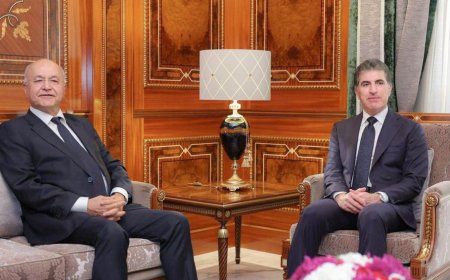











/file/attachments/orphans/rebecca-hague-mothers_864112.jpg)



